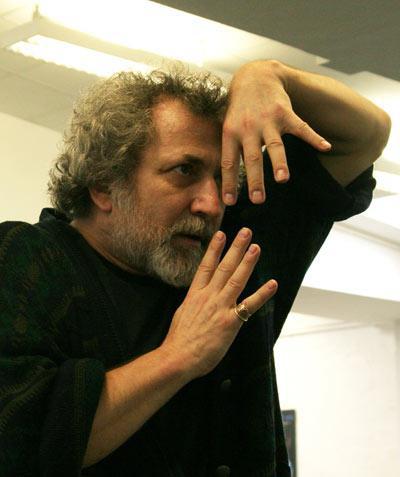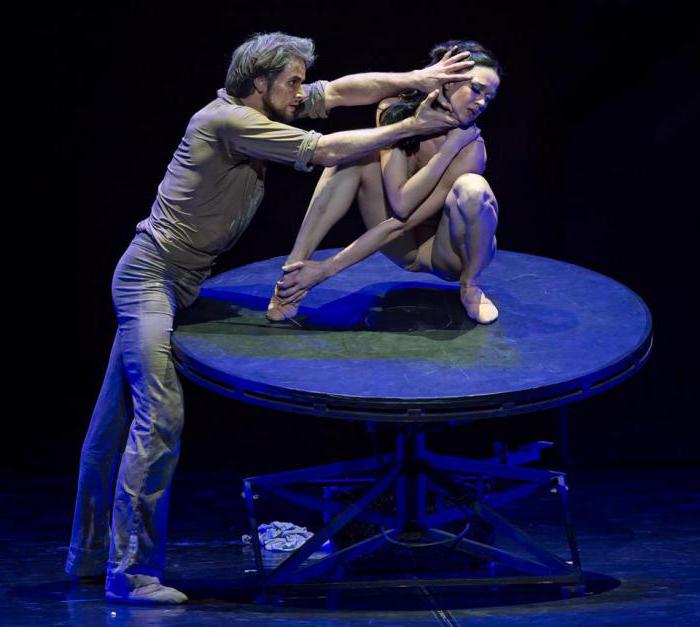The St. Petersburg Academic Ballet Theater of Boris Eifman is the official name of the phenomenon, born in 1977 and which became a unique phenomenon at that time. However, there were some difficulties. The author’s theater of one choreographer, like the author’s cinema, could hardly exist in Soviet reality. However, it arose against all barriers. And from that moment the history of the new ballet art began. Having no constant rehearsal points and props, with a small troupe of enthusiasts, which at first was simply called a ballet ensemble, Eifman managed with the very first performance to achieve what recognized directors took many years to do.

The ballet "Two Voices" is still remembered in the theatrical environment as a real shock. Then followed other productions aimed at a youth audience. Bold cliche-free choreographic decisions were accompanied by the music of Pink Floyd, D. McLaughlin, Gershwin, Schnittke, which led to a dissident halo around the figure of the choreographer. And this attracted a wide mass of spectators into the Boris Eifman Theater, formerly indifferent to the art of ballet.
Features of Eifman's choreography
Thanks to an innate sense of movement and an instinct for writing, Boris Eifman created a completely new dance style, which was repeatedly called the “ballet of the future” in the foreign press. The combination of avant-garde plastic techniques with the traditions of Russian classics, on which the choreographer grew up, is a resounding success. This is not just ballet - it is a mix of free dance, classics and Dionysian mysteries, history and modernity ...
Theater for Eifman is not just a place of work. This is the main business of his life, to which the director takes with appropriate seriousness. “This is my earthly destiny,” says
Boris Eifman.Subjects and ideas
Recognizable stories - a business card, which for many years managed to acquire the Boris Eifman Theater. Most of his productions are plot-based, and often literary works and biographies of people of art become the basis of ballet. Eifman interprets familiar stories in a new way, and they open to the viewer from a completely unexpected direction. “Anna Karenina”, “Eugene Onegin”, “Don Quixote”, “The Brothers Karamazov” (ballet “On the Other Side of Sin”) - the artist blows up the frames of works familiar from the school bench, breaking free into the unknown, turning the textbook plot into a modernist work of art . His ballets talk about today, not about the past.
Psychoanalyst Choreographer
With his characteristic psychologism, Eifman undertakes to interpret the biographies of ingenious creators and simply outstanding historical figures. Ballets based on the life of Tchaikovsky, Rodin, ballerina Olga Spesivtseva ("Red Giselle"), and Paul the First were staged. The archetypal traits of the heroes are pulled out and are often elevated to absolute.
The artist explores the problems of power and humanity, struggle and submission, conducts surrealistic experiments that elevate elements of everyday life to the rank of high art. Each time, Eifman addresses in his ballets the course of life itself - the concept of "art for art" is alien to him. Boris Eifman is called a choreographer-philosopher and even a choreographer-psychoanalyst - this is how he dissects the impulses of the human soul, transforming them into body movements.
Repertoire
Over the years of its existence, the ballet theater of Boris Eifman presented to the public more than forty productions. It is worth talking about some of them, which have become the most significant steps in the creative development of the artist.
- 1997 - “Red Giselle” - a ballet that perpetuated the tragic history of Russian ballerina Olga Spesivtseva, drawn into the maelstrom of revolutionary terror and passed through the loneliness of emigration. The production is distinguished by unusually expressive expressive plastic. Eifman notes the importance of this ballet in his creative ascent.
- 1998 - “My Jerusalem” - a theatrical action that touches on the eternal themes of human existence. Unlike most Eifman productions, ballet does not have a clear storyline. The viewer notes that his peculiarity is that it uses modern techno music (Jewish, Christian, Muslim religious), as well as ethnic music and excerpts from Mozart.
- 2005 - “Anna Karenina” to the music of Tchaikovsky. Ballet focuses on only one storyline of the novel - a love triangle, which, according to the theater, allowed Eifman to achieve maximum psychologism and a powerful emotional impact.

- 2011 - “Roden” - a large-scale statement about the tragic fate of the geniuses, about what was sacrificed for the creation of great masterpieces. Again and again, Eifman turns to struggle, despair and madness, still awaiting many people of art. The revived stone, petrified flesh - everything mixed up on the stage of the theater.
- 2014 - “Requiem” (music by Mozart and Shostakovich). This is another ballet atypical for the choreographer, which was created in two stages. One act was staged in 1991. He was a philosophical reflection on human life to the music of Mozart. But twenty-three years later, Eifman returned to the ballet, adding another act to it - the dedication of A. A. Akhmatova. The premiere of the updated ballet was dedicated to the celebration of the anniversary of the liberation of Leningrad - a holiday that marks the victory of life over death.
- 2015 - Up & Down - a plastic interpretation of F. S. Fitzgerald’s novel “The Night is Tender”. It was in this setting that Eifman's psychoanalytic talent peaked. Original surrealistic solutions pull out their fears and mania from the depths of the subconscious of the heroes, and all this against the background of brilliant jazz arrangements.
- 2016 - “Tchaikovsky. PRO et CONTRA ”is the result of many years of creative comprehension of the composer's personality. The complex storyline conveys the deathbed memories of Tchaikovsky, his whole life flies before the eyes of the viewer.
Reviews
Everyone who has the good fortune of attending Eifman’s ballet is delighted with him. Viewers note that the “Red Giselle” (updated version of 2015) is something completely new and previously unseen. The plastic interpretation of the tragedy and revolutionary terror is amazing, the characters are incredibly lively, they can be loved and hated all the time until the performance is over and the lights are turned on in the hall.
Not a single person who attended Eifman's ballet will remain indifferent to him, as the press reviews and impressions of many viewers vividly testify.
Tour
These productions are not limited to the rich repertoire of the Boris Eifman Theater. In St. Petersburg, in the Alexandrinsky Theater, as well as in many cities around the world, the performances of previous years are repeatedly repeated, which have not lost their psychological impact. Body language is international. Eifman's innovative productions were appreciated outside of Russia. The troupe spends a significant part of the year on tours abroad. A feast for Petersburg theater-goers is the day when the Boris Eifman Theater returns to the city. Reviews of the performances are the most enthusiastic, and tickets are sold out long before the day of the performance.
Dance academy
The alleys of the Petrograd side hide the real treasure from prying eyes - inside the small modest building is the Boris Eifman Dance Academy, an educational institution that comprehensively trains professional ballet dancers. Students say that this is not just a school - it is a creative laboratory that implements the concept of modern Eifman dance.
During the author’s training, young talents undergo not only physical, but also spiritual training. The result is not just a great dancer, but also a comprehensively developed harmonious personality, capable of original creative solutions. Many of the former students continue their work with the master, getting a job in the theater of Boris Eifman, which is answered only in a positive way. It should be noted that children from the age of seven are accepted into the academy, training is free of charge.
Dance of the future
Now the ballet theater under the guidance of Boris Eifman is recognized not only in the artistic environment, it is rightfully revered by everyone. Eifman is a brilliant artist of our time. Who knows, maybe in the future he himself will take a worthy place in a series of great creators, and another ingenious choreographer will stage a ballet about his career in this wonderful world.